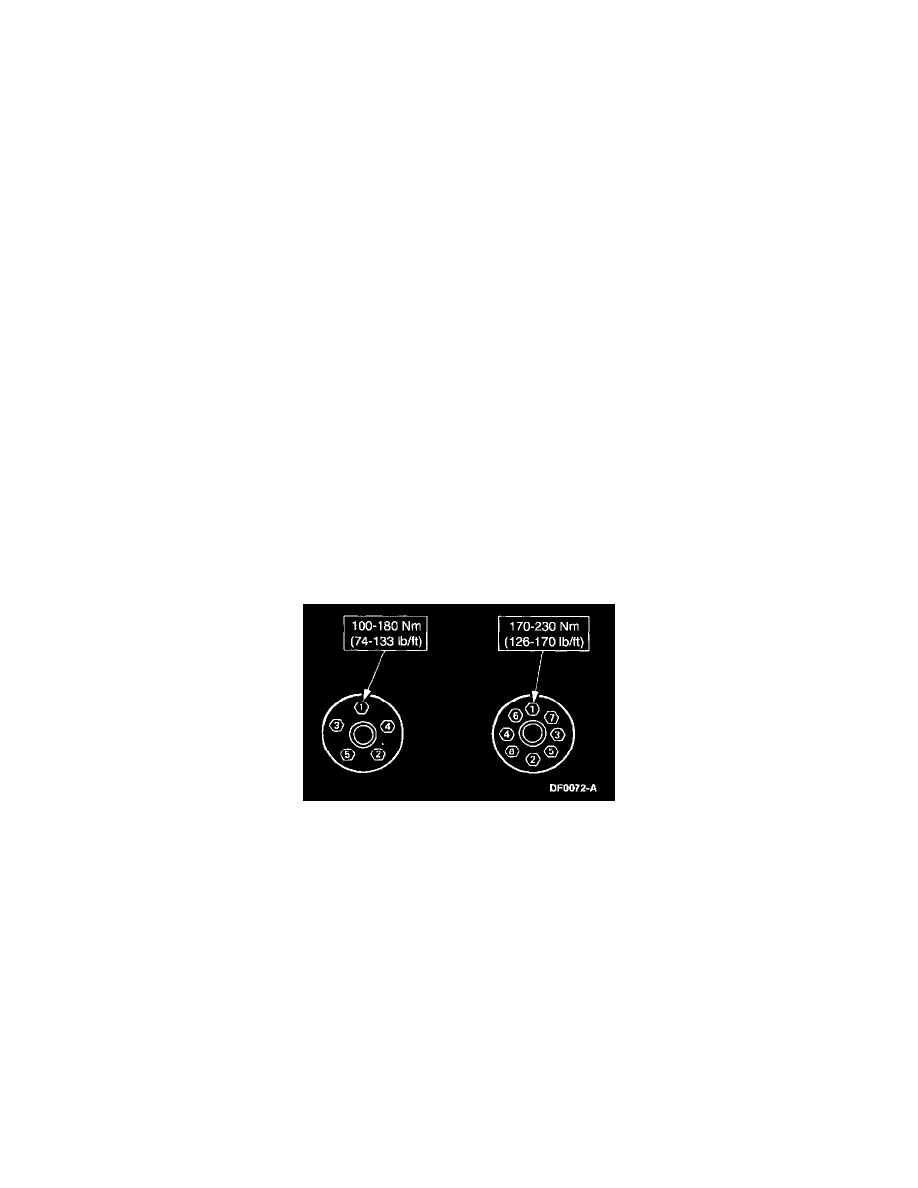E 150 1/2 Ton Van V6-4.2L VIN 2 (1997)

Wheels: Service and Repair
Replacement
REMOVAL
1. Set the parking brake and block the diagonally opposite wheel. Place the selector lever in the PARK position.
WARNING: AFTERMARKET WHEEL ASSEMBLIES MAY NOT BE COMPATIBLE WITH THE VEHICLE. USE OF
INCOMPATIBLE WHEEL ASSEMBLIES CAN RESULT IN EQUIPMENT FAILURE AND POSSIBLE INJURY. USE ONLY
APPROVED WHEEL ASSEMBLIES. NEVER RUN THE ENGINE WITH ONE WHEEL OFF THE GROUND, FOR INSTANCE,
WHEN CHANGING A TIRE. THE WHEEL STILL ON THE GROUND CAN CAUSE THE VEHICLE TO MOVE.
2. Remove the wheel cover, if so equipped.
3. With the weight of the vehicle still on the tires, loosen the lug nuts.
NOTE: Do not remove at the lug nuts at this time
4. Raise the vehicle until the wheel and tire assembly clears the floor.
5. Remove the lug nuts
6. Remove the wheel and tire assembly.
INSTALLATION
1. Position the wheel on the front disc brake hub and rotor.
WARNING: WHEN A WHEEL IS INSTALLED, ALWAYS REMOVE ANY CORROSION, DIRT OR FOREIGN MATERIAL
PRESENT ON THE MOUNTING SURFACES OF THE WHEEL OR THE SURFACE OF THE FRONT DISC BRAKE HUB AND
ROTOR THAT CONTACTS THE WHEEL. INSTALLING WHEELS WITHOUT PROPER METAL-TO-METAL CONTACT AT THE
WHEEL MOUNTING SURFACES CAN CAUSE THE LUG NUTS TO LOOSEN AND THE WHEEL TO COME OFF WHILE THE
VEHICLE IS IN MOTION, RESULTING IN LOSS OF CONTROL.
2. Install the lug nuts loosely. Make sure the cone ends of the lug nut face inward.
3. Turn the wheel until one lug nut is at the top of the wheel hub bolt circle. Tighten the lug nut until snug. In a crisscross-type pattern, tighten the
remaining lug nuts until snug to minimize runout.
4. Lower the vehicle.
5. Tighten the lug nuts evenly in the torque sequence shown in the illustration.
6. Install the wheel cover.
